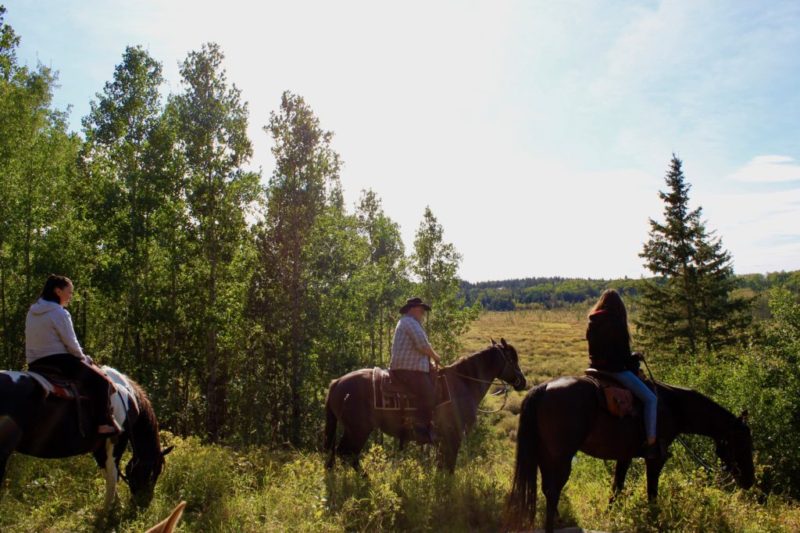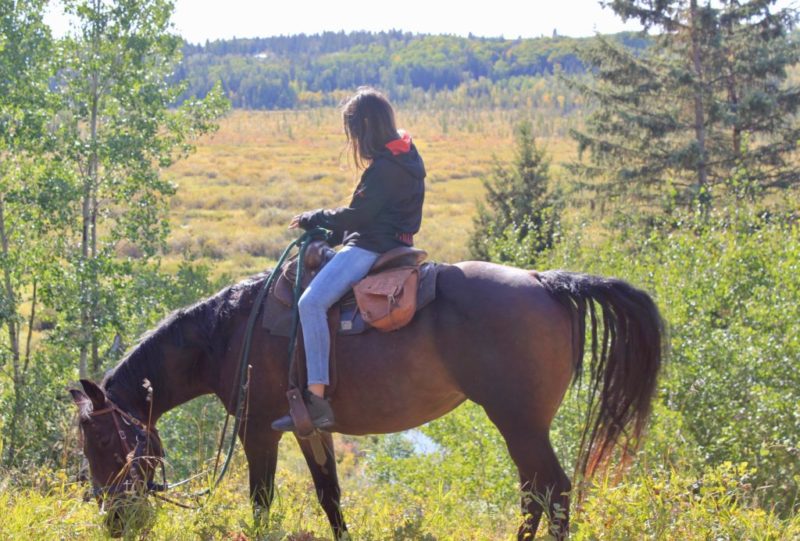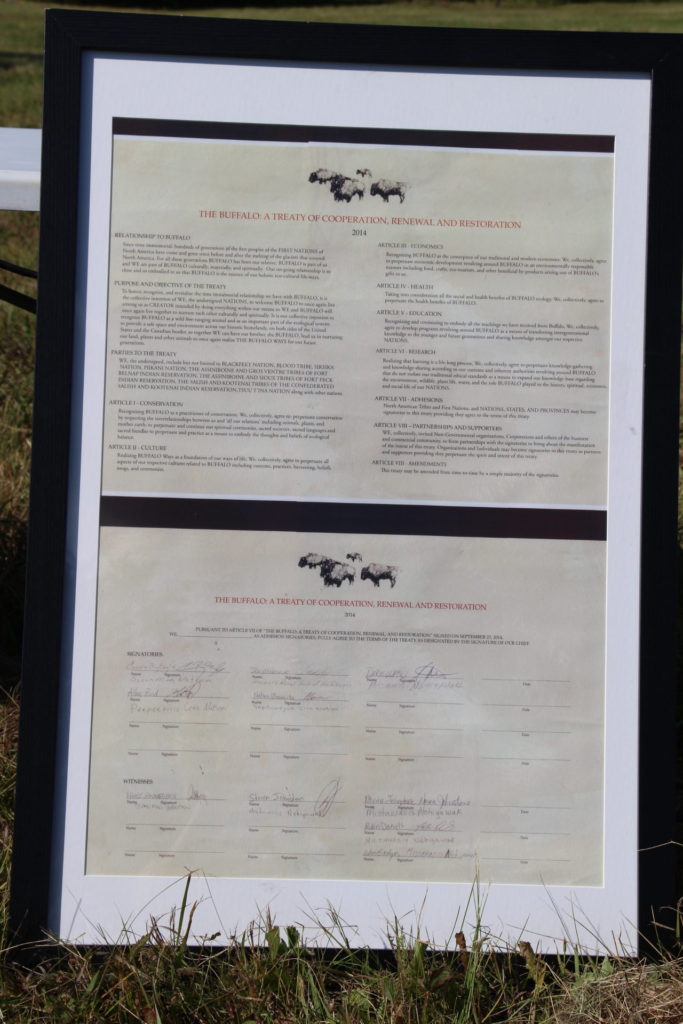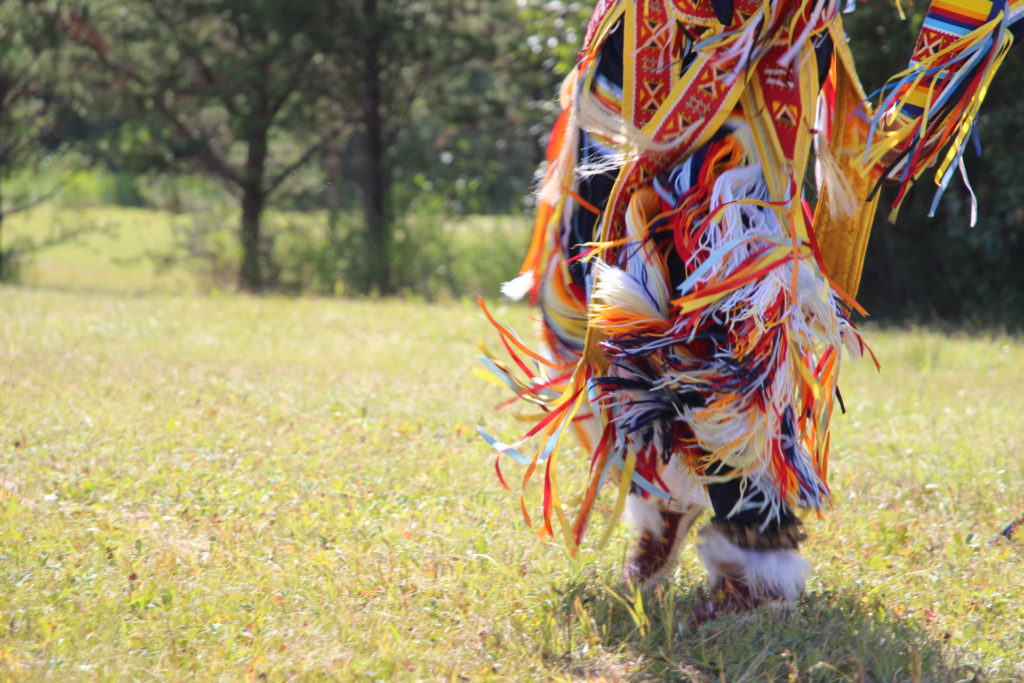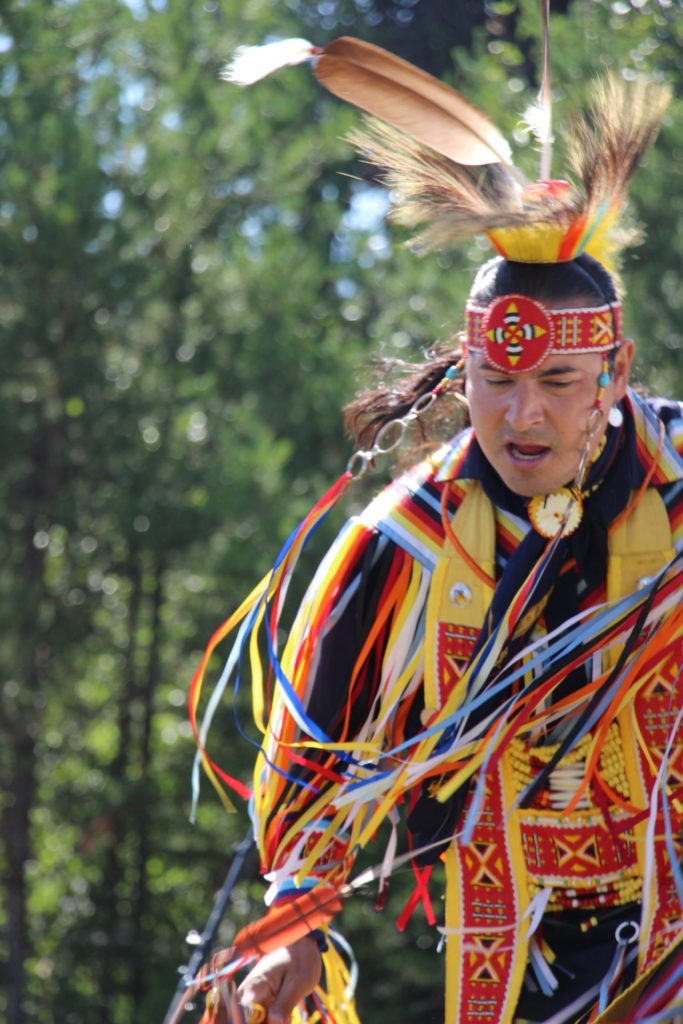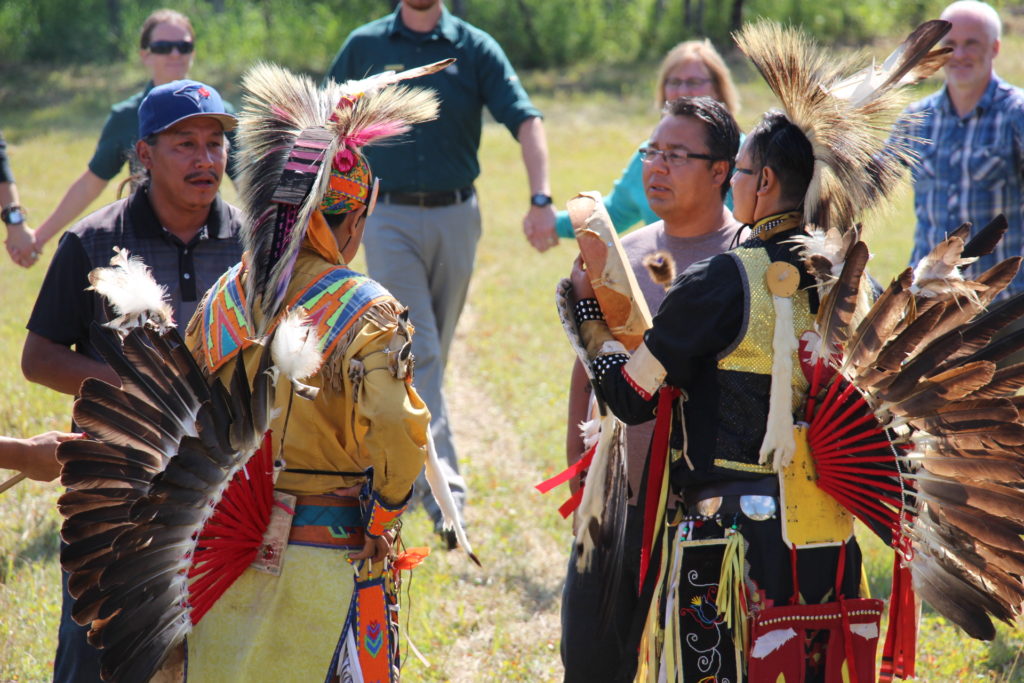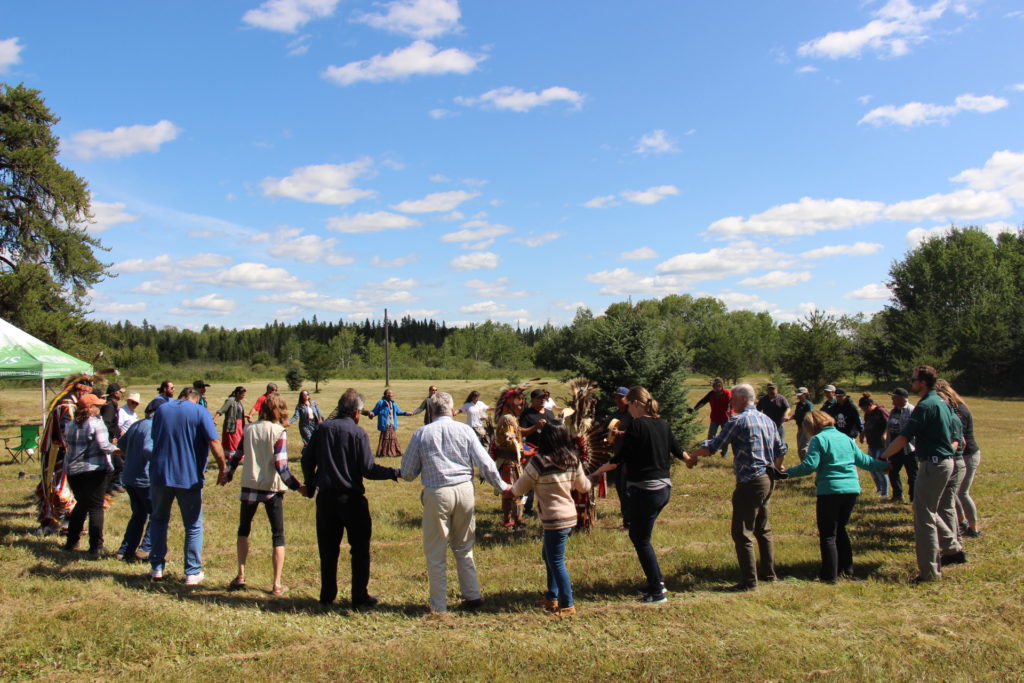Indigenous Guardians Protect Bison
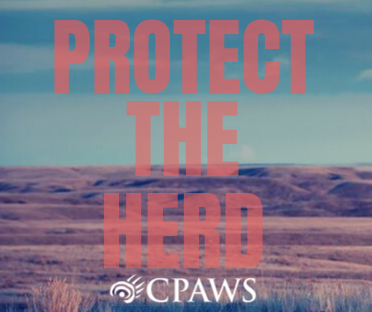
There are still wild bison on the prairies—but for how long?
The Sturgeon River Plains Bison are the last wild Saskatchewan herd in their traditional habitat range… and a herd that is hurtling rapidly towards extirpation.
CPAWS Saskatchewan has been involved in the sustainable management of the Sturgeon River Plains Bison since 2005, when the herd numbered about 500 animals. Since then, over-hunting and an anthrax outbreak in 2008 have seen that number drop to about 100 today.
The herd, found in the area surrounding the Southwest corner of Prince Albert National Park in Saskatchewan, is among the very few completely wild and free-ranging herds of Plains bison roaming in their historic range.
A recent study out of the University of Laval suggests that at the current rate of unsustainable harvest, the herd will dwindle to nothing inside of 10 years.
While much focus has been placed on communicating with the local hunters and reversing the downward population trend via the Sturgeon River Plains Bison Stewards (a local rancher organization), the Federal Government has yet to officially declare Plains bison as “threatened” under the Species at Risk Act (SARA)—despite the Committee on the Status of Endangered Wildlife in Canada’s (COSEWIC) recommendation to do so in 2004 and again in 2013.
Read more: First Nation receives federal funding to help bison from Prince Albert National Park
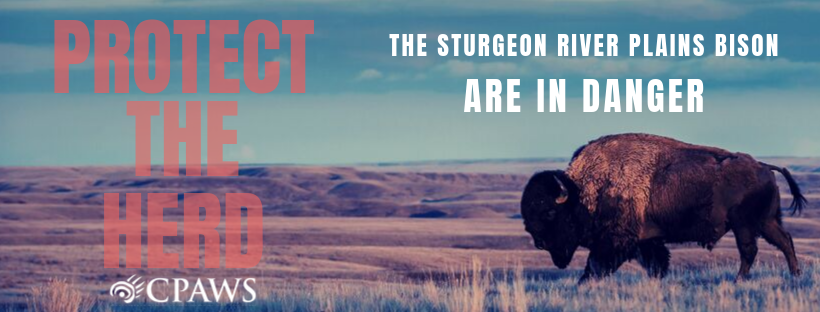
Donating to CPAWS Saskatchewan below will allow us to put this plan into effect and make sure similar plans are never again curtailed for lack of resources.
Other effective conservation measures
In absence of this plan, CPAWS Saskatchewan has found another way to help the herd by taking direct, on-the-ground action.
Utilizing valuable research undertaken by the University of Laval (QC) that has identified significant risk of the extirpation of this herd, CPAWS Saskatchewan and Mistawasis Nêhiyawak have successfully applied for conservation funding through the federal Indigenous Guardians program.
Together, Mistawasis and CPAWS Saskatchewan are leading urgent on-the-ground stewardship to directly address the critical threats to the longevity of the Sturgeon River Plains Bison Herd. Coordinated management and partnership will be an integral part of ensuring this herd has all the opportunities for a long and healthy existence.
In the words of CPAWS Saskatchewan executive director Gord Vaadeland, “The Sturgeon River bison herd is unique in the sense it still has … this traditional historic relationship with Indigenous people. That’s something that doesn’t exist in other (plains) bison populations.”
Plans to help the bison
In 2013 Parks Canada, the Ministry of Environment (Government of Saskatchewan) and the Bison Stewards (and in partnership with local Indigenous communities, municipalities, CPAWS and other wildlife NGO’s), put together the Sturgeon River Plains Bison Management Plan.
This plan made significant headway within Prince Albert National Park to sustainably manage the herd. With the herd now more widespread, including on land outside of the park, innovative thinking has been crucial to the management and stewardship techniques put into effect for the herd: especially when much of this important work has been curtailed by a scarcity of resources.
While the plan was never fully implemented for lack of funding, it remains fully applicable to the herd’s current situation—even as the predicament of the Plains bison grows ever more dire.
What is the Indigenous Gaurdians Program?
Based on successful Indigenous Ranger Programs in Australia, the Canadian Indigenous Guardians Program was established in the 2017 federal budget: $25 million over four years was allocated for successful applications from Indigenous and Metis groups who sought greater opportunity to exercise stewardship responsibilities over their traditional lands, waters, and ice.
CPAWS Saskatchewan hopes that this Guardian Program will inform a long-term approach for a potential National Indigenous Guardians Network.
“The Indigenous Guardians Pilot Program supports Indigenous rights and responsibilities in protecting and conserving ecosystems, developing and maintaining sustainable economies, and continuing the profound connections between the Canadian landscape and Indigenous cultures.”
Environment and Climate Change Canada
What does the program look like on the ground?
The guardians of the Sturgeon River Plains Bison are selected directly from Mistawasis Nêhiyawak First Nation, and represent some of the best and brightest young people from the community.
As a people that historically lived and survived with the buffalo, the Nation is deeply committed to regaining their traditional connections to the buffalo— both culturally and spiritually.
Mistawasis Nêhiyawak’s long-term vision is to use what they learn through this initiative to bring a new herd to Mistawasis lands in the future. This would allow for the enhancement of the ecological integrity of their lands and enhanced food security, all brought by the benefits of the ecological services of the buffalo.
Images from a CPAWS excursion into Prince Albert National Park with the Mistawasis Guardians
The value of Indigenous Guardianship Programs
“Reconciliation between Aboriginal and non-Aboriginal Canadians, from an Aboriginal perspective, also requires reconciliation with the natural world. If human beings resolve problems between themselves but continue to destroy the natural world, then reconciliation remains incomplete. This is a perspective that we as Commissioners have repeatedly heard: that reconciliation will never occur unless we are also reconciled with the earth”
Page 18, Honoring the Truth, Reconciling the Future Report, July 2015.
The Indigenous Guardians program that Mistawasis Nêhiyawak and CPAWS Saskatchewan have undertaken together is interwoven with a desire to build strong partnerships both with each other, and with the landscapes that we share.
Beyond this, the program provides an avenue for the youth of Mistawasis Nêhiyawak to connect to the land, their people, and their Elders while also training them for careers in the natural resource management sector.
Youth employed by the Guardians Program will be trained in monitoring techniques, data collection, management planning in collaboration with harvesters and other Indigenous groups, and in advocating for the herd all across the province.
Through complete monitoring of the Sturgeon River Plains Bison herd and collaboration with various stakeholders, the Guardians will identify the critical habitat of the bison (both outside of Prince Albert National Park and within) and bring together the necessary parties that need to be involved in the next steps of protection for the herd.
A North American commitment to saving the bison
In the spring of 2018, Mistawasis Nêhiyawak became a member of the Buffalo Treaty. This Treaty is a Nation-to-Nation Treaty that follows the spirit and intent of ancient interactions between Indigenous groups as they shared the Great Plains and lived nomadic lives that followed the buffalo across the continent.
This Treaty returns buffalo consciousness to 21st Century thought and action, and explores ways to protect present herds and to reintroduce buffalo to traditional Indigenous lands.
You can view the treaty itself here.
“We should not see for a second time the disappearance of our brother the Buffalo.”
Anthony Blair Dreaver Johnston, Mistawasis Nêhiyawak
This summer, Mistawasis Nêhiyawak hosted several Buffalo Treaty events to spread awareness about the treaty itself and of its commitment to protect the bison of North America and to revitalize the cultural and spiritual ways of life that once revolved around the bison.
Photos from Mistawasis Nêhiyawak Buffalo Treaty Gathering, August 2019
A Brighter Future
It is our sincere hope here at CPAWS Saskatchewan that through efforts and partnerships like the ones that we are forming with Mistawasis Nêhiyawak, Parks Canada, the Government of Saskatchewan, and with other organizations and concerned parties, we can make a difference in the trajectory of the Sturgeon River Plains Bison Herd.
It is only by working together that we can enact change; by standing strong these last wild places and creatures in Saskatchewan will stay just that– Wild.


